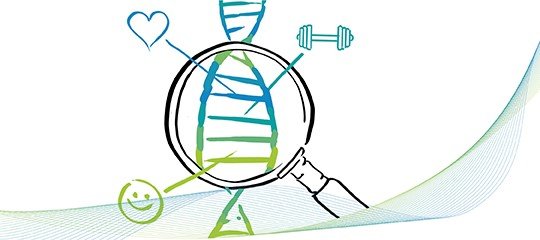



Genes help scientists get selective
Given that none of us would be here without them, genes are pretty important. As technology continues to advance at lightning speed, scientists are learning more about genes and how to harness their power for the purpose of selective breeding.The idea sparks a number of burning questions, but perhaps the most fundamental one can be simply stated: what is selective breeding?
When it comes to running the show in human and animal systems, genes wear the pants. These bits of DNA that determine who we are at the cellular level have a huge task - directing billions of cells to create the proteins that keep us going.

Genes are hereditary…pass it on
We inherit our genes directly from our parents. Though most genes are identical from person to person, less than one percent of genes have small variations, and those differences are what give each person, animal or plant, its unique set of physical features.
Altering those features in animals and plants is where selective breeding comes in. It’s a form of genetic modification in which no foreign genetic material (DNA) is added to the organism; instead, it involves deliberate selection for desirable traits.
In the pork industry, whether it’s making pigs more feed efficient or supporting them in fending off disease, genetics is helping breeders hone in on the traits that matter most to producers and consumers.
Not surprisingly, selective breeding is all about selection, as it’s critical to choose the right animals to create the next generation depending on the targeted trait. That choice is generally made in one of four ways, or a combination of them: visual appraisal, production testing, progeny testing and marker-assisted selection (collecting and analysing a DNA sample for specific markers that have a measurable effect on a trait).
Data feeding hunger for knowledge
At Hypor, information is collected from a range of farms and systems on a wide array of traits such as birth weight, 14 day weight, test weight, feed intake, and backfat and muscle depth. The data is fed into a breeding database which runs a genetic evaluation and calculates genetic values for each pig and each trait. Those values are combined to generate a selection index that identifies which pigs excel in which traits (essentially a report card for each animal), and the information is passed to the producer to aid in the selection process.
As far as which traits to target, a lot depends on the focus of a breeding/genetic line. With maternal (dam) lines, prolificacy is the main driver, so reproductive traits, litter characteristics (like number of piglets born alive) and mothering ability are paramount. Terminal (sire) lines, meanwhile, focus on traits like growth rate, feed efficiency and leanness. Breeders must avoid including too many traits into a single breeding line, as some traits correlate negatively with others. Also, selecting for too many traits at once will slow the progress of each one.
In spite of the breeding line distinctions, however, there are some exceptions. In the past, geneticists selected dam lines solely for reproductive traits and sire lines strictly for growth traits. Yet females also have a need to grow faster and be leaner. It is also important to consider that a commercial (crossbred) pig gets 50 percent of its genes from the dam and 50 percent of its genes from the sire, so some overlap in the trait selection is needed to create the optimal commercial pig.
Going global
With the global nature of agriculture today, companies like Hypor are factoring that into the selection process. If all genetic information is collected from a high health herd in Saskatchewan, Canada for example, there’s no guarantee that performance will be duplicated when pigs are shipped to Colombia and exposed to different temperatures and disease stresses. This phenomenon is known as genotype-by-environment interaction, where genotypes respond to environmental variation in different ways.
To allow for those variations, Hypor takes a global approach, testing the same genetics in multiple environments and incorporating data from a range of sites in determining the best candidates for breeding.
Like any field of genetics, selective breeding continues to evolve. More companies today are experimenting with artificial intelligence or machine learning to aid in data collection and analysis. The success of selective breeding hinges on high quality data, and the more the merrier. Information is constantly flowing to Hypor’s genetic database from all over the world.
At the same time, environmental data such as barn temperature or air quality can be hard to measure. As new technology emerges in the form of sensors and other cutting edge equipment, more environmental details can be gleaned, which should make it easier to distinguish trait differences linked to genetics, from those caused by the environment. Combine this with artificial intelligence, and companies are well on their way to improving the accuracy of genetic predictions and the resulting benefits for the industry.
To meet producer needs, genetic selection must be attuned to the latest practices. As feed costs continue to rise, companies are pinpointing feed intake and feed conversion as traits that warrant even further attention and improvement. Can pigs get by on second grade, less expensive, or alternative feed ingredients (to leave more food for humans) and still perform as needed?
Given the financial implications of disease for producers in the form of medication, labour costs, compromised performance, and higher mortality, disease resilience is another trait that the swine industry is pushing to improve. Because animals are kept on high health farms for breeding, improvement in resilience may be difficult, as it’s hard to select for something that can’t be measured. With that in mind, new research is underway that investigates the genetic ability of pigs to respond to disease challenges in a natural environment.
It may be a cliché to say “the sky is the limit", but that clearly applies to genetics and selective breeding. While it’s encouraging to think how much animal breeding has improved livestock performance, it’s even more intriguing to imagine where it goes from here.








